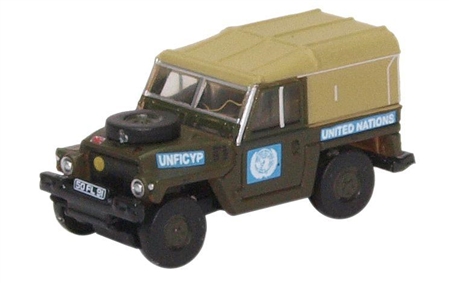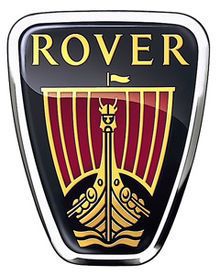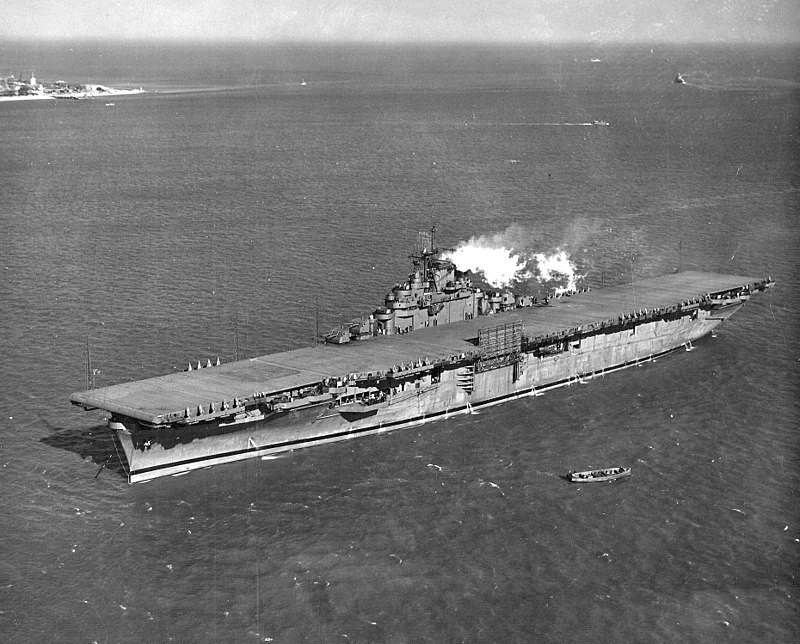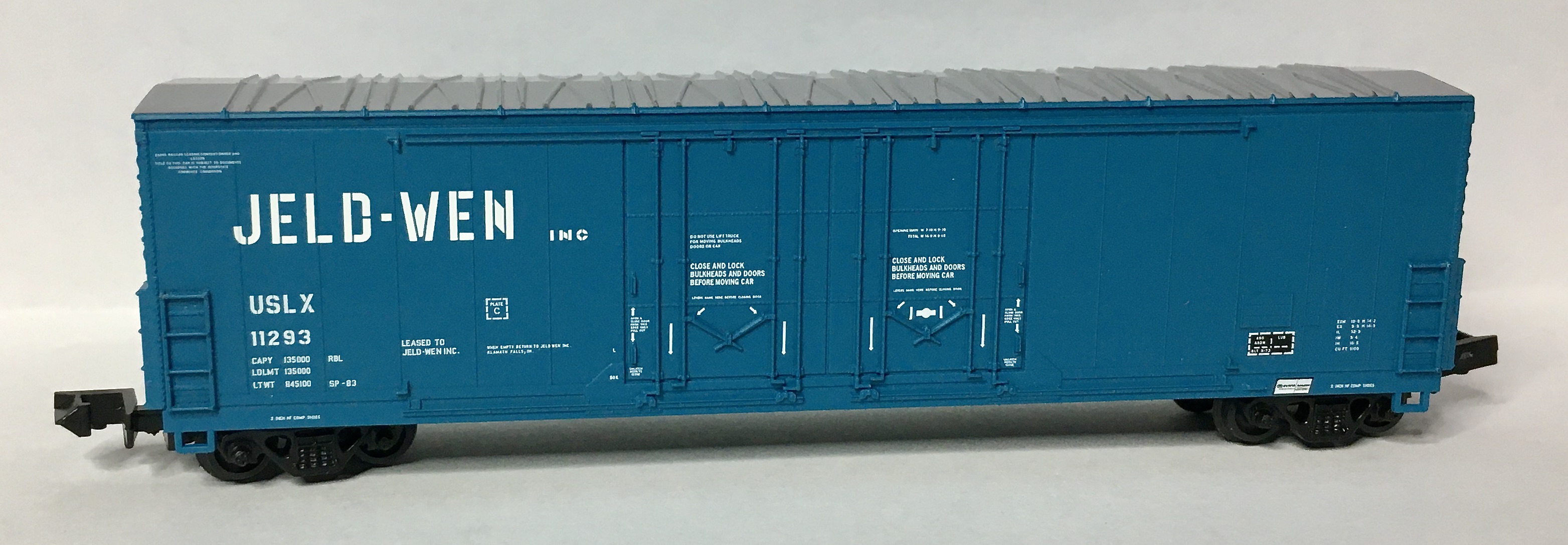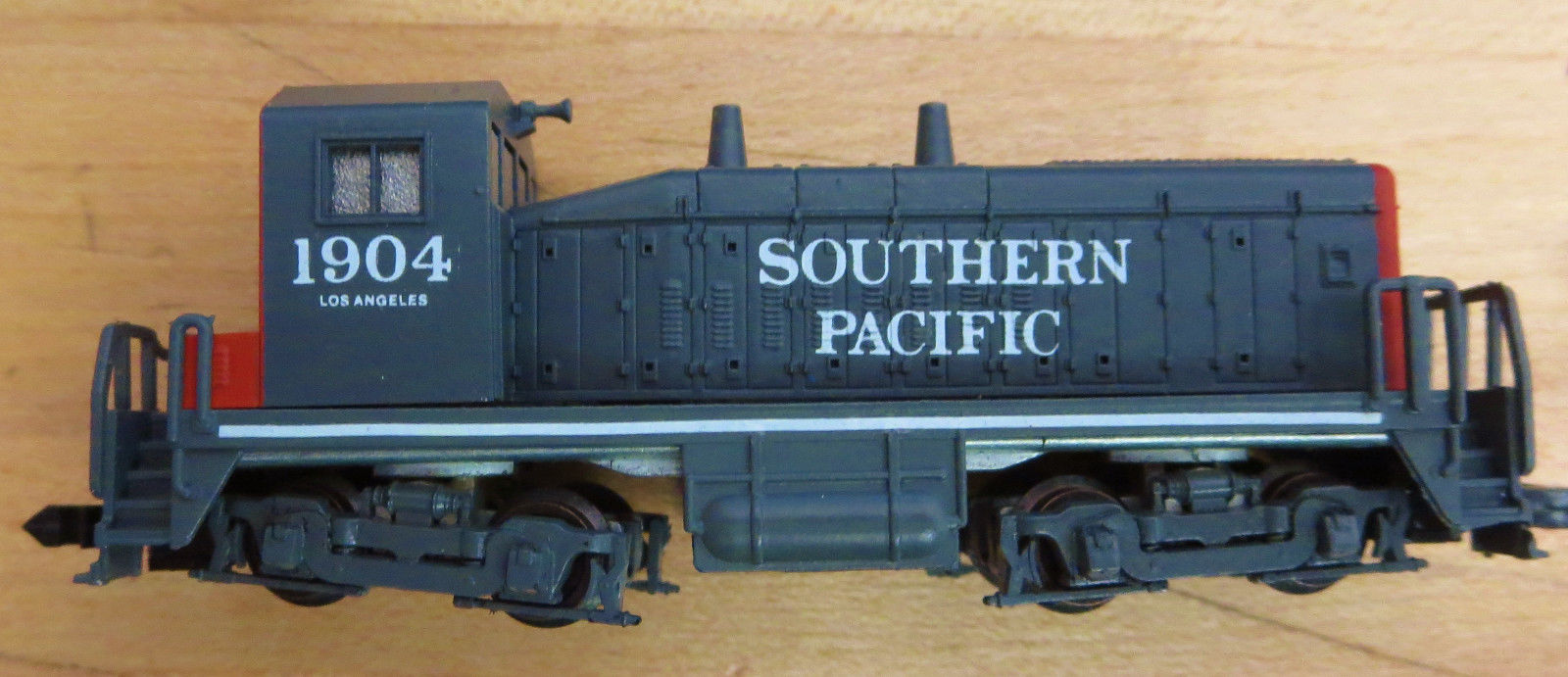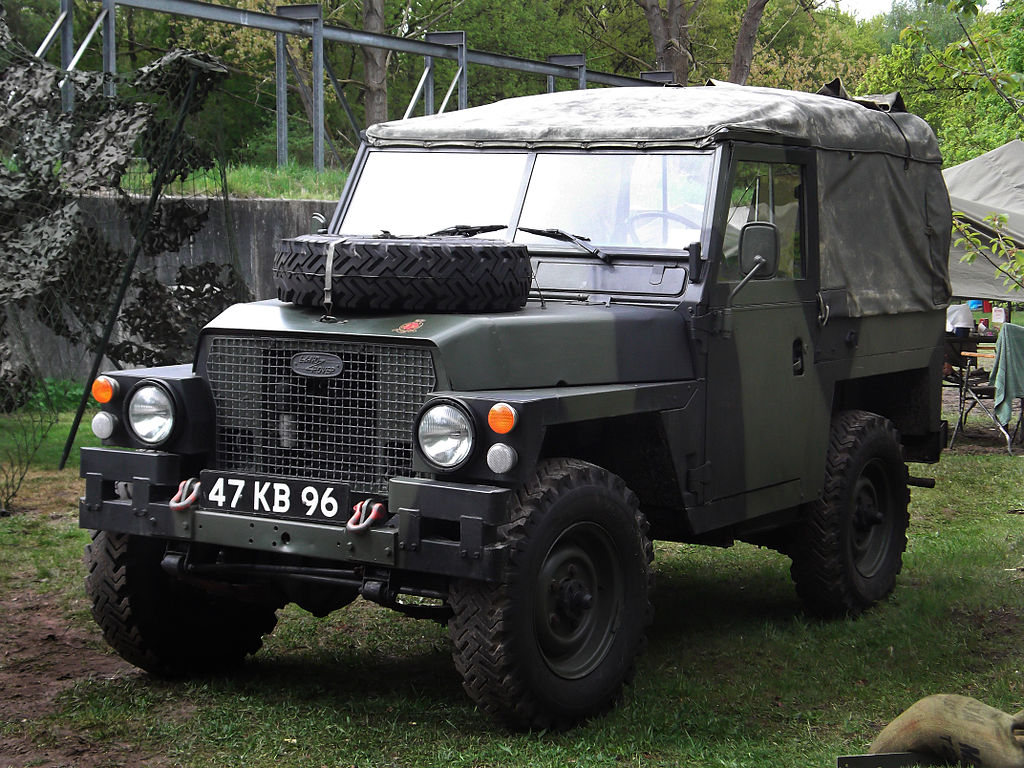Specific Item Information: Decorated in the olive green drab colour scheme with slightly lighter green 'canvas' roof and the distinctive UN pale blue and white lettering, the model replicates a United Nations Peacekeeping Force vehicle used in Cyprus. It has a military registration plate 50 FL 91.
Prototype History: In the early 1960s both the Royal Marines, then largely based aboard commando carriers, and the British Army required a vehicle that could be carried by air. They had taken delivery of the Westland Wessex helicopter, which could carry a 2,500 lb (1,134 kg) load slung beneath.
The smallest Land Rover available at the time was a Series IIA 88 inch (2235 mm) wheelbase, which was too heavy. Land Rover began work on a lightweight version to fit the specifications in 1965. A new modification to the basic Series IIA was devised by making many body components easily detachable and removing many non-essential items. The result was the Land Rover Half-Ton, known widely as the Lightweight or Airportable. In practice, to reduce weight sufficiently for the helicopters of the day to lift them in combat conditions, the tilt (roof) and sticks, the upper parts of the body, the doors and windscreen were removed, to be refitted later. The most significant change, however, was a reduction in width by 4 inch (100 mm), by redesigning the standard Series IIA axles and fitting shorter half-shafts, which meant it would fit on a standard pallet.
Complete, the Lightweight IIA weighed 2,650 lb (1,202 kg), over the specified weight. The term Lightweight appears misleading as a standard 88 Land Rover weighed 1,318 kg (2,906 lb), but the higher total weight was due to the various frame reinforcement required for military usage. However, with the removable body panels taken-off it was below the limit. Since improvements to the helicopters meant more lift was available, the MoD accepted it for use. The main applications were actually to be shipped by cargo aircraft or stacked on train wagons, with helicopter transport a rare occurrence.
The smallest Land Rover available at the time was a Series IIA 88 inch (2235 mm) wheelbase, which was too heavy. Land Rover began work on a lightweight version to fit the specifications in 1965. A new modification to the basic Series IIA was devised by making many body components easily detachable and removing many non-essential items. The result was the Land Rover Half-Ton, known widely as the Lightweight or Airportable. In practice, to reduce weight sufficiently for the helicopters of the day to lift them in combat conditions, the tilt (roof) and sticks, the upper parts of the body, the doors and windscreen were removed, to be refitted later. The most significant change, however, was a reduction in width by 4 inch (100 mm), by redesigning the standard Series IIA axles and fitting shorter half-shafts, which meant it would fit on a standard pallet.
Complete, the Lightweight IIA weighed 2,650 lb (1,202 kg), over the specified weight. The term Lightweight appears misleading as a standard 88 Land Rover weighed 1,318 kg (2,906 lb), but the higher total weight was due to the various frame reinforcement required for military usage. However, with the removable body panels taken-off it was below the limit. Since improvements to the helicopters meant more lift was available, the MoD accepted it for use. The main applications were actually to be shipped by cargo aircraft or stacked on train wagons, with helicopter transport a rare occurrence.
Road Name History: 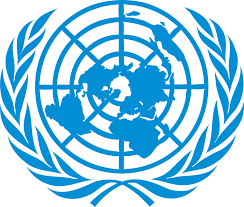 The United Nations (UN) is an intergovernmental organization tasked to promote international cooperation and to create and maintain international order. A replacement for the ineffective League of Nations, the organization was established on 24 October 1945 after World War II with the aim of preventing another such conflict. At its founding, the UN had 51 member states; there are now 193. The headquarters of the UN is in Manhattan, New York City, and is subject to extraterritoriality. Further main offices are situated in Geneva, Nairobi, and Vienna. The organization is financed by assessed and voluntary contributions from its member states. Its objectives include maintaining international peace and security, promoting human rights, fostering social and economic development, protecting the environment, and providing humanitarian aid in cases of famine, natural disaster, and armed conflict. The UN is the largest, most familiar, most internationally represented and most powerful intergovernmental organization in the world.
The United Nations (UN) is an intergovernmental organization tasked to promote international cooperation and to create and maintain international order. A replacement for the ineffective League of Nations, the organization was established on 24 October 1945 after World War II with the aim of preventing another such conflict. At its founding, the UN had 51 member states; there are now 193. The headquarters of the UN is in Manhattan, New York City, and is subject to extraterritoriality. Further main offices are situated in Geneva, Nairobi, and Vienna. The organization is financed by assessed and voluntary contributions from its member states. Its objectives include maintaining international peace and security, promoting human rights, fostering social and economic development, protecting the environment, and providing humanitarian aid in cases of famine, natural disaster, and armed conflict. The UN is the largest, most familiar, most internationally represented and most powerful intergovernmental organization in the world.
The UN Charter was drafted at a conference between April–June 1945 in San Francisco, and was signed on 26 June 1945 at the conclusion of the conference; this charter took effect on 24 October 1945, and the UN began operation. The UN's mission to preserve world peace was complicated in its early decades by the Cold War between the US and Soviet Union and their respective allies. The organization participated in major actions in Korea and the Congo, as well as approving the creation of the state of Israel in 1947. The organization's membership grew significantly following widespread decolonization in the 1960s, and by the 1970s its budget for economic and social development programmes far outstripped its spending on peacekeeping. After the end of the Cold War, the UN took on major military and peacekeeping missions across the world with varying degrees of success.
From Wikipedia

The UN Charter was drafted at a conference between April–June 1945 in San Francisco, and was signed on 26 June 1945 at the conclusion of the conference; this charter took effect on 24 October 1945, and the UN began operation. The UN's mission to preserve world peace was complicated in its early decades by the Cold War between the US and Soviet Union and their respective allies. The organization participated in major actions in Korea and the Congo, as well as approving the creation of the state of Israel in 1947. The organization's membership grew significantly following widespread decolonization in the 1960s, and by the 1970s its budget for economic and social development programmes far outstripped its spending on peacekeeping. After the end of the Cold War, the UN took on major military and peacekeeping missions across the world with varying degrees of success.
From Wikipedia
Manufacturer Information: Established in 1993, Oxford Diecast is a British Company that specializes in high-quality die-cast metal vehicles. Produced in various scales, the firm's models are marketed as collector items, gifts, and promotional products. Their largest production goes to OO scale (1:76) and in 2015 they introduced railway products under 'Oxford Rail' brand.
Their N-scale collection is using the 1:148 scale ratio as most British manufacturers.
Their N-scale collection is using the 1:148 scale ratio as most British manufacturers.
Item created by: gdm on 2018-02-12 21:04:37
If you see errors or missing data in this entry, please feel free to log in and edit it. Anyone with a Gmail account can log in instantly.
If you see errors or missing data in this entry, please feel free to log in and edit it. Anyone with a Gmail account can log in instantly.


